To say that Belgrade Parks (65 of them) are particularly impressive means either deliberate economizing with the truth or complete oblivion of the order of things in the universe. Given that none of them has made it for more than a 100 years unchanged, we cannot really boast a tradition of cultivating green areas. In a city that has been razed to the ground so many times (and where budget was spent sensibly more often as an exception than as a rule), landscape architecture had suffered its own share. Therefore, there is not a single park that seems like a whole but rather a patchwork, in which, if you are careful enough, an unexpected moment of beauty could be caught.
We begin the story of Belgrade parks with the youngest of them all – the Park of Friendship. This 35 acre surface along the bank of the Danube is pretty much the first thing you will see on your way to Zemun, as soon as you cross Branko’s Bridge. It is one of the most nobly conceived, and possibly the most incomplete park in Belgrade, and as such, a living monument to naivety and tragedy of times past.
Its conception is tied to Belgrade Conference, held in September, 1961, or the First Summit of The Non Aligned as it became known in history. The event was, when all is said and done, an overambitious attempt of Yugoslavia’s leadership to get a serious voice and backing in the arena of International Politics during the Cold War. At the time when Berlin Wall was being built and nuclear crisis in Cuba was a damn straight reality, the policy of non-alignment (with either of the blocks) and peaceful coexistence was a fairly luring concept for most of the Third world. Some went as far as to call it the mankind’s consciousness.
In the eyes of South Slavic nations, the event is somewhat blown out of proportion – especially if you take into account a very reserved stance of India (which was up to her neck in western loans). However one should not minimize the entrepreneurship behind the initiative, either. The pressure the superpowers have exerted on potential participants of the conference is pretty much a solid proof that the arena of international politics lets nothing to chance and that the faith of the world is written by a handful of the very powerful rulers.
Politics aside, the initiative for the creation of the park came from the Youth Environmental Association of Serbia. They considered the event of such magnitude demanded a lasting landmark. All of the city fathers were benevolent to such a proposition, and held in particular regard the central motif of the park the Peace Alley. This 180 meters long pathway, formed by the two rows of trees was planted during the summit. The first tree, an oak, was planted by the Environmentalist, whereas the remaining 26 sycamores were planted by none other than the presidents of the countries that attended the summit, as their symbol of dedication to world peace.
This noble gesture soon became a tradition, and the list of eminent people who left their green mark on left bank of the Sava grew ever larger. Queen Elizabeth II, Gerald Ford, Leonid Ilich Brezhnyev, The Iron lady (Ms Thatcher), François Mitterrand, Robert Mugabe, Jimmy Carter, Indira Ghandi, Areeza Pahlawi, Nikolay Chaushescu, Royalty of Benelux and Scandinavia, and the members of the Rolling Stones were just a few among them.
We find it particularly cool that Mr Josipović planted a Siberian Elm in the Park while he was still in office in the neighboring Croatia. Unfortunately, many of the original trees have suffered greatly from climate change, and so Mr Mubarak’s, Queen Elizabeth’s, Prince Akihito’s, Juan Carlos First and the Moammer el Gadaffi’s contributions have withered away.
The first plan of the park was created by the engineer of the Urban Planning Institute, Mr Vladeta Dyordyevich. As many other centrally planned things it hadn’t fully come to fruition so the Yugoslav authorities announced an all-Yugoslav contest for the conceptual layout plan in 1965. The first prize went to Mr Milan Pashalishki and it became the Park’s blueprint, valid to this date. How impeccably organised, responsible and punctual things were in self-managing socialism is attested by the fact that Mr Palishashki’s idea has not yet been fully realized (9.5 hectares out of 12.5 to be precise).
The three Obelisks
The preparations for the event have left an architectural trait on other parts of Belgrade as well. The original concept envisioned the placing of exactly three obelisks. The first was erected on the Marx and Engels Square (nowadays Nikola Pashic Square), equidistant from Dom Sindikata Building and The Parliament Building where the plenary sessions were held.
The second obelisk was built on the green patch next to Branko’s Bridge, as it was on the way which delegations had to pass in order to get from the Parliament to the Federal Executive Council (nowadays Palace Serbia). Although all thee were conceived as temporary, this one was kept and restored in 1989 for the Ninth Summit of the Non-Alligned.
It underwent another refurbishing in 2010, which was in our humble opinion very successful. In an STD awareness raising campaign, the Youth of JAZAS had put on a giant condom on it and unfortunately, infuriated some of the elder residents. After quite a bit of struggle the city cleaners removed after only three days.
The last obelisk was supposed to be in the Park of Friendship, right across the street from the third main point of the conference – the Federal Executive Council (nowadays called Palace Serbia). And it is exactly this third obelisk that has somehow become a symbol of the tragic epilogue of the whole story.
It was not erected during of the conference in 1961, and the later design of Mr Palishashki, actually planned a giant sphere on a pedestal in its place. But that also never came to being. Bloodbath and dissolution of Yugoslavia ensued, eventually sealed with the bombing of the Federal republic Yugoslavia (that inherited the Socialist giant) in 1999 .
On the first anniversary of the ending of bombing, the former first lady of the state (and a complete nutcase, btw.) decided to build a monument on the spot where the third obelisk was supposed to be. This monument, however, was not erected to inspire the peace loving emissaries of the Third World, but a token remembrance to the couple thousand victims that fell in Yugoslavia’s seventy eight day war with the rest of the developed world. This is why the initial plan was to have it 78 meters tall, but that never came to being either.
It was named (and inaptly translated for anyone remembering The Bangles) the Eternal Flame. The six meter wide pedestal had a twenty three meters high obelisk and sculpture of flame in bronze on top of it (that added another 5 meters to it). On top of that, there was a proper flame that churned another three meters high – in the glory of those that were killed during the bombing and the lunacy of the people who decided to flip the bird on NATO pact.
There were eight spotlights built into the plateau around it and four laser beams mounted on the pedestal. The beams shed light as high as 20 km upwards, so the flight control had to be informed when they were switched on. The bronze cast letters, spelling an inappropriately long text written by Ms Markovich and the excerpts from the two poems written by a great Yugoslavian poet Branko Miljkovich were attached to the base. The monument was built in just 10 days and all of the state and military officials attended its unveiling.
Ironically, the eternal flame had burned for just a couple of months. Immediately after the 5th October revolution, the costly laser beams have disappeared (rumor has it they ended up in a discotheque in Budva, but nobody bothered checking). Soon after, the flame extinguished, as the gas from the reservoir was depleted, and after that the gas pipes were ruined.
The monument and the space around it became a gathering spot of the crews of rappers, skaters and local junkies who had adapted the space to their own aesthetic criteria. Spotlights were smashed, the pedestal was damaged and covered in graffiti whereas the bronze letters were gradually unmounted. The first to go was letter A from “VATRA” (fire) just to be replaced with a hand written U instead. The Eternal Fire thus became The Eternal Weed (as vutra is Belgrade junkie-slang for marijuana). The other letters from Ms Markovich’s dull text had also gradually dissappeared and it appeared that nothing could save the place from decay.
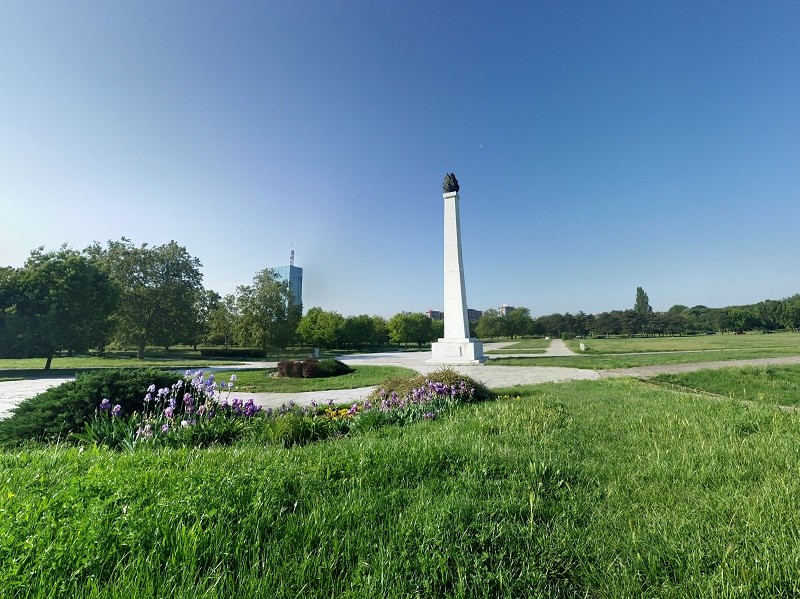
And then, out of the blue, as if the much needed catharsis had finally occured, the monument was repainted in white and since then nobody bothered vandalizing it again. All that was left were the verses of great Miljkovich dedicated to his homeland and his Yugoslavia. And although it may have not been the sculptors original intent, the fire at the top is incredibly reminiscent of the fire on the emblem of the last “real” Yugoslavia (the SFRY and not the unfortunate heir that the authors of this text were sentenced to in their formative years).
Today, the Park of Friendship is slightly forgotten, and the obelisk stands there as a silent reminder that it does’t really matter who erected the monument, but to whom it was dedicated to. Incidentally, just before this text was published, the city authorities have officially opened a competition for yet another rearrangement of the Park. We hope, they will persevere in this attempt…
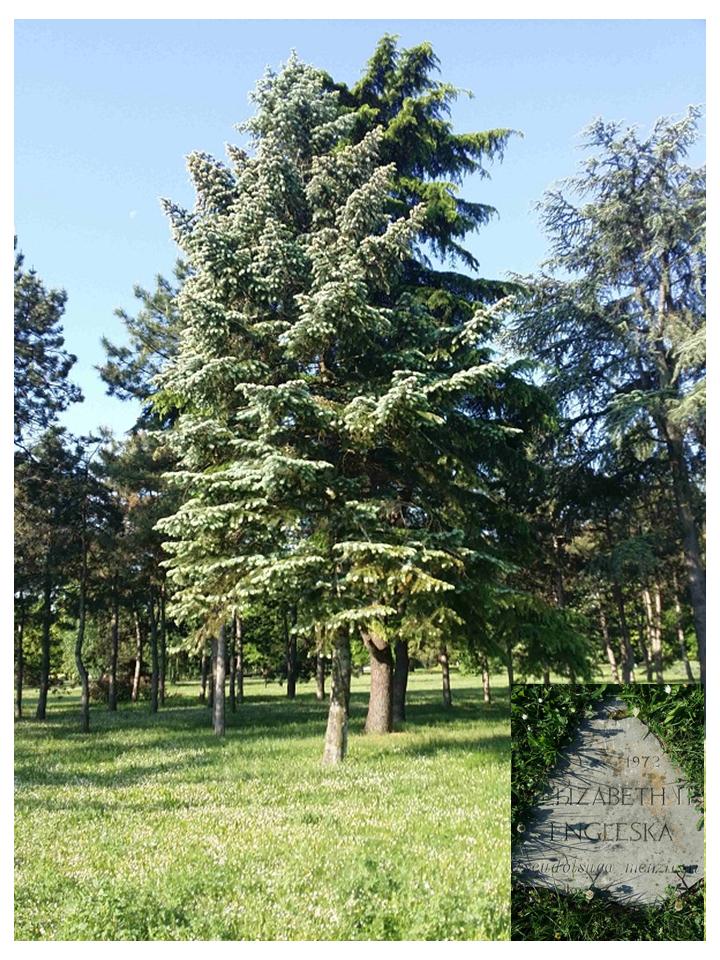
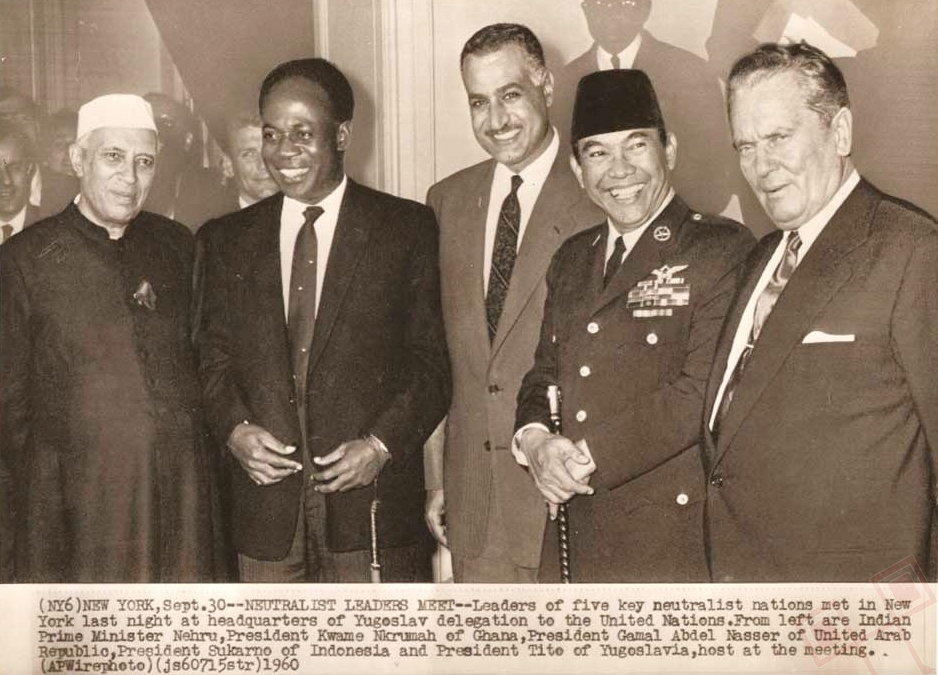
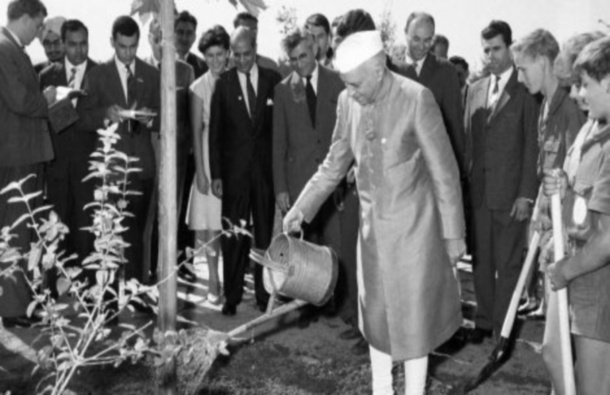
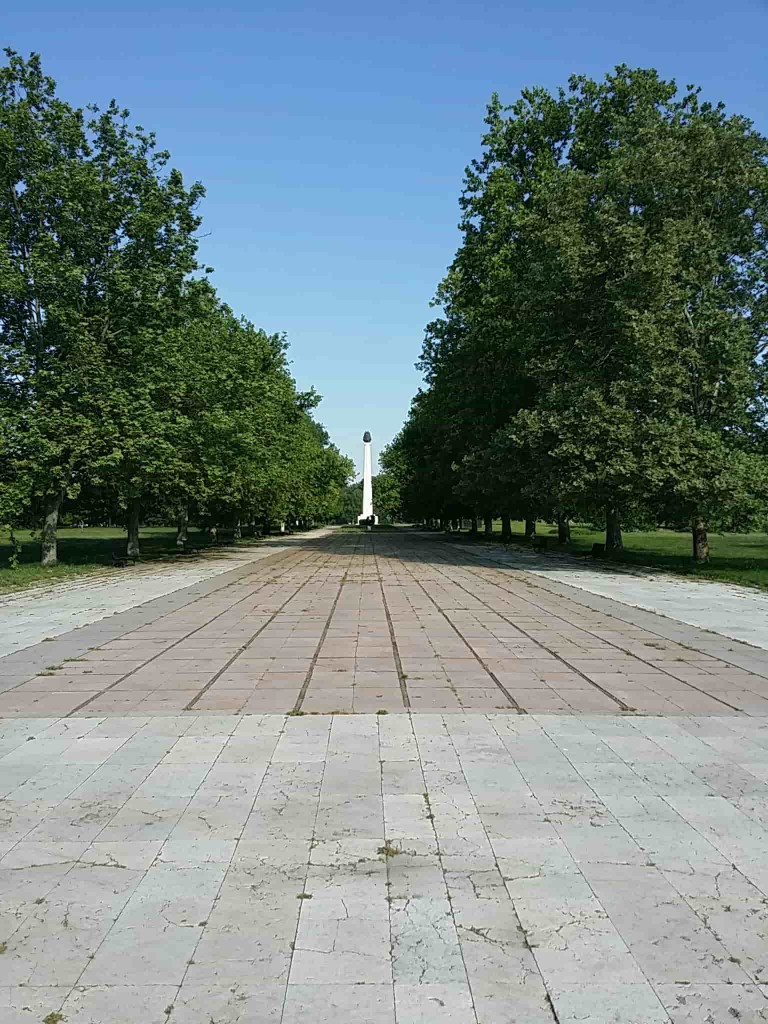
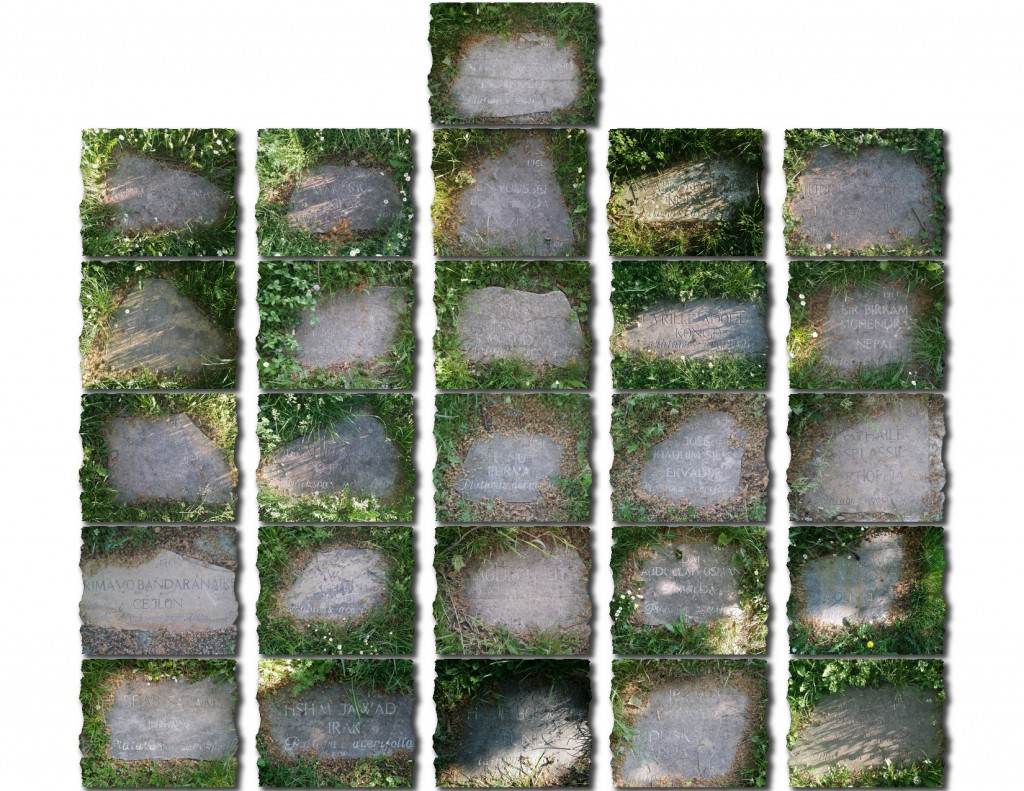



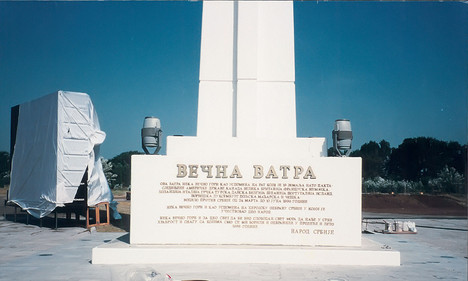
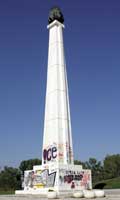

[…] and actual flame, and the place has been vandalised, then fixed up (read an interesting account here), and is looking like it can see better […]